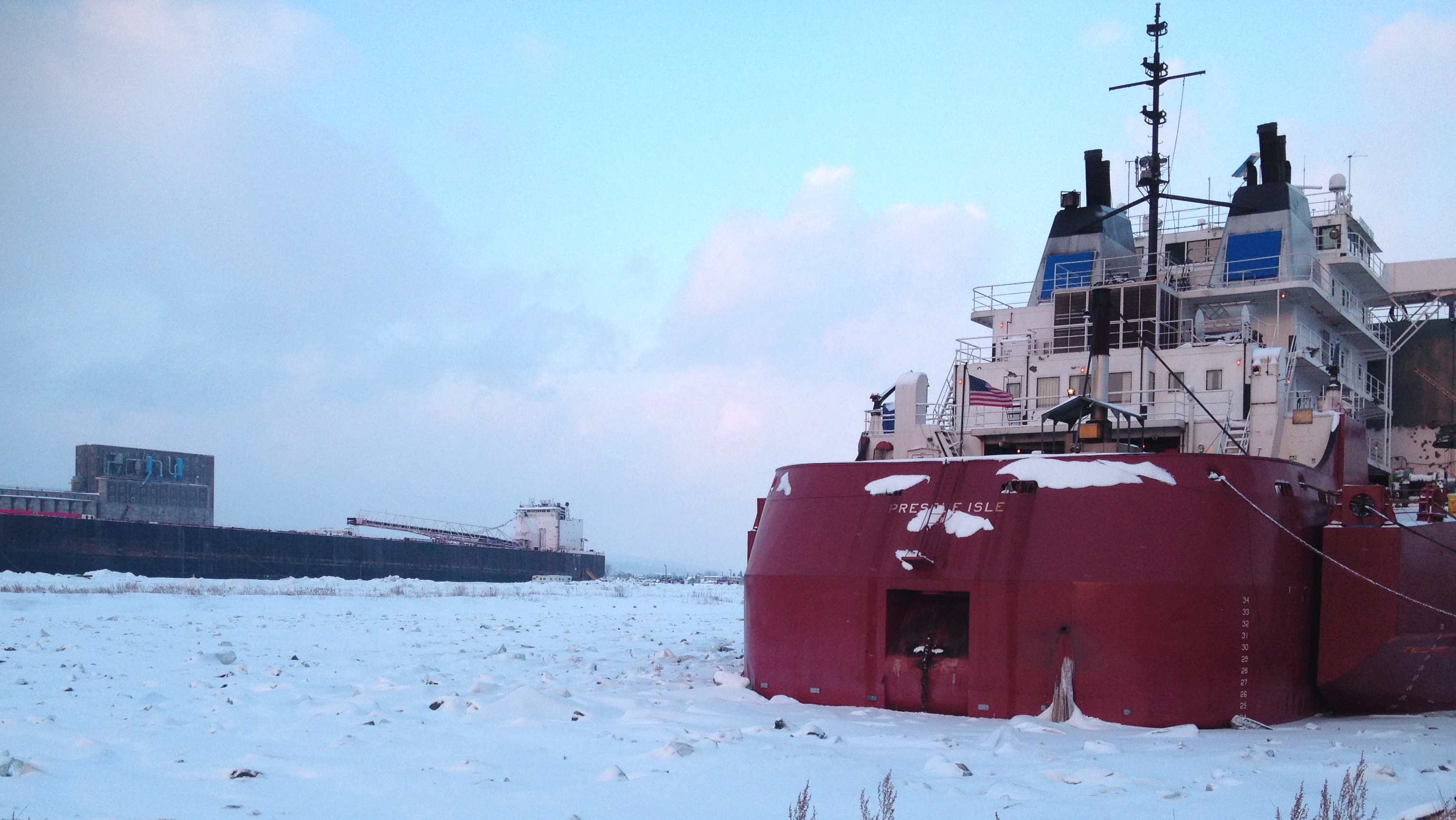DULUTH, Minn. -- Lake Superior is virtually icing over for the first time since 1996, thanks in large part to unyielding arctic air.
"This wasn't even a cold snap. It was just persistent cold for most of January and for most of December as well," Jay Austin, of the Large Lakes Observatory at the University of Minnesota Duluth, told KARE.
"This year is really very remarkable."
It's not just the sheer amount of ice on Lake Superior that's drawing so much attention, but the fact that it bucks the general trend of warming on the big lake in the past two decades.
Composite ice coverage maps generated by the US Navy and Canadian Ice Service show that nearly all of the lake's surface was 90 to 100 percent covered in ice by mid-February. A comparison with the same week in 2013, 2012, 2011 and 2010 show revealed that most of the lake was ice free, open water.
In February of 2009, almost half of the lake had iced over to the 90 to 100 percent level, but there was still a sizable area of open water even that year.
"Years like this are becoming less and less common with time, and years like 2012 when we had basically no open water ice whatsoever are becoming more and more common," Austin, an assistant professor of physics and lake temperature researcher, told KARE.
Of course, we're not talking about a solid sheet of ice from one end of the lake to another. It's constantly shifting and breaking up due to wind conditions.
"The wind is still capable of moving some of that shore ice out into the lake," Austin explained.
"And so one day Duluth will be completely socked in and the next day we'll have open water."
Shipping season impact
For the very active Port of Duluth Superior, the big freeze will translate to a rough start to the shipping season in late March. The 2013 season was already shortened by a cold December, so iron ore pellets and other down bound products have been stockpiled in the Duluth area.
"At the start of the season, you've got steel mills that are begging for pellets and every time you have another day, a two-day, a three-day delay to get the ship there it's putting production way behind," Adele Yorde of the Duluth Seaway Port Authority told KARE.
Even loading the big ships has been made more difficult by the extreme cold, as decks and cargo hatches often become coated with a six inch layer of ice. But crews work overtime because there aren't many other options for moving that raw cargo.
"You're talking thousand-footers that can carry 65,000 tons of iron ore or coal down bound, and it's not practical to move that to the land side on by railroad or trucks."
The US Coast Guard Cutter Mackinaw will be called upon to open shipping lanes throughout the Great Lakes, and the ships will have to form convoys behind it.
"That will build extra delays into their operation because all the ships have to wait until every last one in an area is ready to move," James Sharrow, the port authority's facilities manager, told KARE.
"At least once they start moving they can probably keep moving because of the convoy."
Sharrow, a professional engineer and veteran of shipping on the Great Lakes, said many ships are now fortified for ice. But, at the same time, the shifting plates of ice and the great pressure those slabs put on ships can't be taken lightly.
Coast Guard in Duluth
The Coast Guard Cutter Alder, based in Duluth, was not designed to be an ice breaker per se, but will be pressed into duty to clear harbors of ice to help kick start the shipping season.
"Rather than running into ice and breaking it apart, we essentially ride up on top of the ice and use the weight of the ship to break through it," Ensign Barton Nanney explained.
"At three knots, we can break through about 14 inches of ice, but we have the ability to go up to 3 feet of ice with a technique called backing and ramming."
He agreed that there's a certain choreography involved to getting one-thousand foot ships to move in conjunction in a convoy. And the shipping lane, once created, doesn't necessarily stay put because of the wind.
"You'll get places to where you'll break it up and it'll be about a foot thick, and you'll come back in a couple days and that ice will have stacked up and it will be two-feet thick," Nanney remarked.
"So it doesn't really go away. You just move it around."
In the meantime, the Coast Guard members stationed in Duluth are honing their ice rescue skills, something that's likely to be in high demand because the ice cover had made it easier for people to venture out farther away from the solid ice near the shore.
"The ice in Lake Superior is constantly moving," Master Chief Robert Pump said.
"So sportsmen were go out on it and over time, without noticing it, a crack could open up around them. Or they could actually break free from the fast ice and be adrift on the lake."
Cooler Summer ahead
Even after the shipping traffic returns to normal, the icy winter will be adding a chill to the air.
"These high ice years tend to lead to very cool summers," Jay Austin explained.
He said once the ice is covered by snow, the sunlight that would normally warm the lake in the spring will bounce off the surface. And the colder the lake is, the colder the air blowing off it.
During the winter months the warmest water is at the bottom of the lake, but when that water temperature reaches 39 degrees Fahrenheit it rises to the top. That point, when the warmest water is at the top of the lake, will hit much later than usual.
"I expect we're going to see that in early to mid-August. It's going to be considerably later because of the extensive ice cover we have this year," said Austin.
"The lake is going to start to warm about the time it normally starts to cool off again. So it's going to be a very short warm season on Superior this year."
The region's cool summers have been a tourism draw and spawned the T-shirt slogan, "Duluth is a Cool City." In 2014, that sentiment will ring more true than ever.


